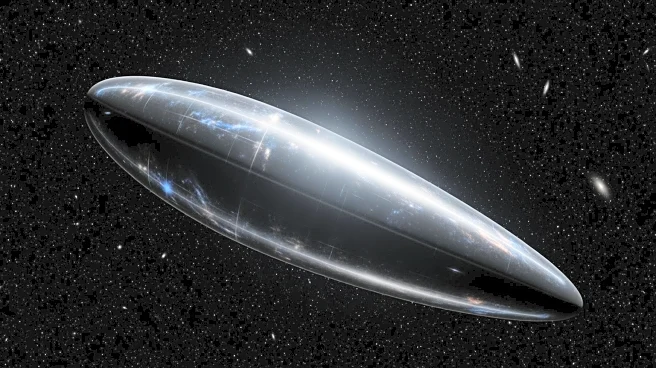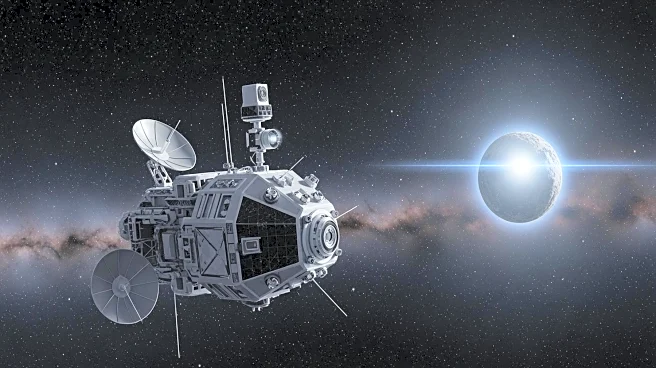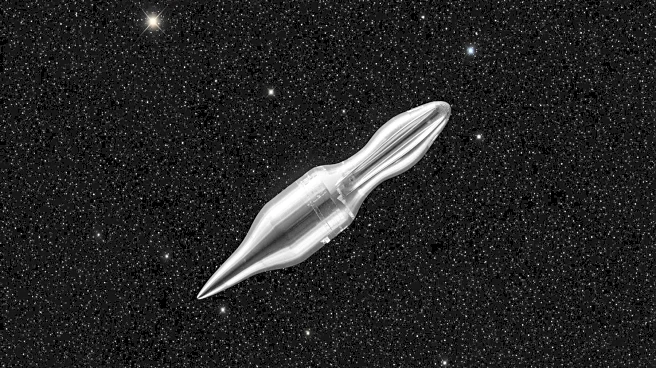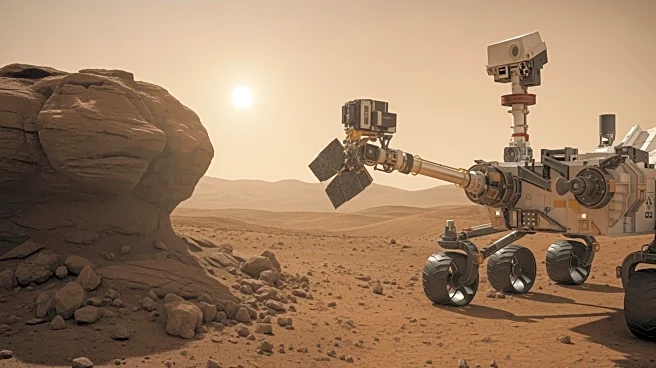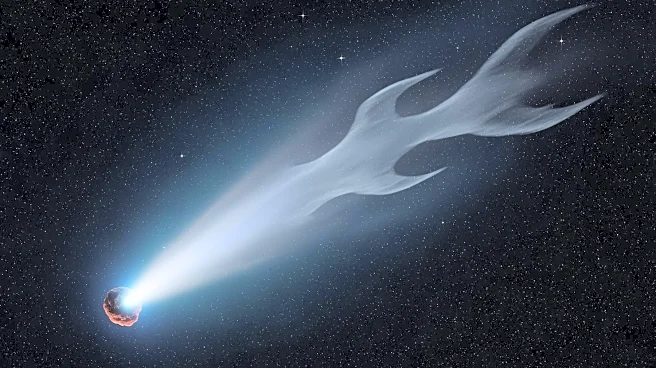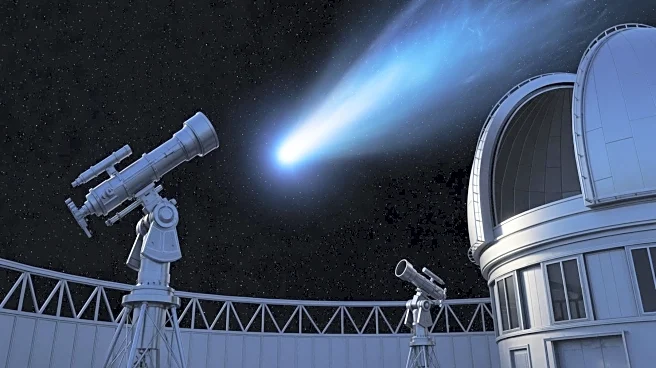What's Happening?
The interstellar object 3I/ATLAS, comparable in size to Manhattan, has developed a tail, leading a Harvard scientist to suggest it might be an alien craft. Initially observed with an 'anti-tail,' the object now
shows a true cometary tail, as revealed by images from the Nordic Optical Telescope. The tail formation could indicate controlled maneuvering, with the anti-tail possibly being a braking thrust. The International Asteroid Warning Network has added 3I/ATLAS to its list of targets for scientific observation, noting its prolonged visibility and interest to the scientific community.
Why It's Important?
The suggestion of alien maneuvering for 3I/ATLAS highlights the ongoing intrigue and speculation surrounding interstellar objects. While the scientific community remains cautious, the possibility of extraterrestrial technology sparks public interest and debate. Monitoring such objects provides valuable data on interstellar phenomena and contributes to our understanding of the universe. The event underscores the importance of international collaboration in space observation and the need for continued investment in astronomical research.
What's Next?
Researchers are eagerly awaiting high-resolution images from NASA's HiRISE camera, which captured 3I/ATLAS during its close approach to Mars. These images, delayed due to a government shutdown, are expected to provide further insights into the object's characteristics. As 3I/ATLAS approaches the sun, scientists will continue to monitor its behavior, looking for additional signs of unusual activity. The object's closest approach to the sun is scheduled for October 29, offering a unique opportunity for observation.



